NOTICE CHILDREN’S CALENDAR ART SUBMISSIONS HAS NEW EMAIL
Due to technical problems, we are required to change the email address for submission to this year’s MAP Children’s Art Contest for the the upcoming 2024 Calendar. If you have already submitted art please contact Monica at ArtContest@mangroveactionproject.org to be sure your submissions have been received or for instructions on how to resubmit. If you have not yet submitted, please submit to this new email address before the August 31 deadline.
FEATURED STORY
LAST CALL for Mangrove Art Contest and Calendar Competition
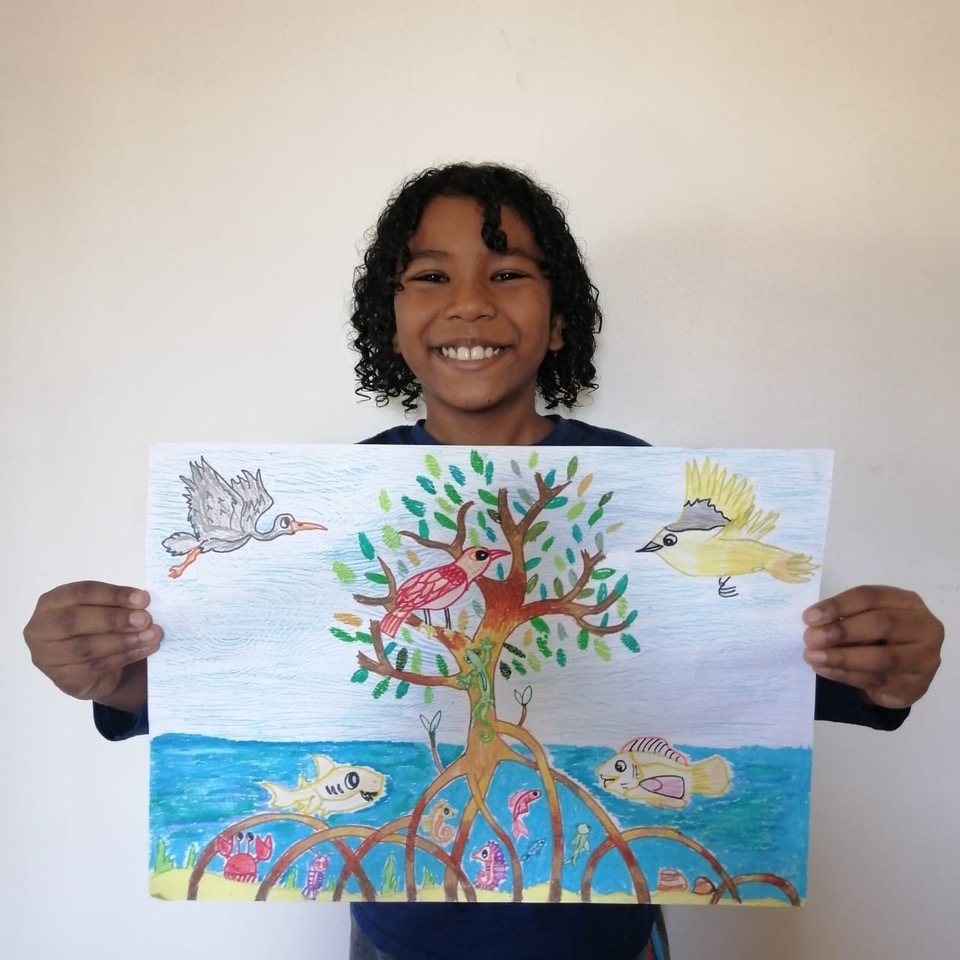 GLOBAL - Mangrove Action Project (MAP) 22nd annual Mangrove Art Contest submissions closes August 31. This is an opportunity for the younger generation to share what they have learned about the vital role Mangroves play in the lives of coastal communities and marine life around the world by letting them explore their imagination and have fun when creating their pieces of art. The competition is open to all children worldwide, with selected winners published in the 2024 calendar to be distributed internationally to raise awareness of mangrove forest ecology. This colorful calendar has increased in popularity since its first publication in 2002. The 2024 calendar is our 22nd edition. We would like to invite children from your country to join in this fantastic creative and educational competition. It is an opportunity for the younger generation to learn about the vital role Mangroves play in the lives of coastal communities and marine life around the world whilst letting them explore their imagination and have fun when creating their pieces of art. For any questions, contact Monica Gutierrez-Quarto, the international art competition coordinator at: ArtContest@mangroveactionproject.org or visit our website below.

All you need to know about Mangrove forests- one of nature’s frontline sea defences
 GLOBAL - Mangrove forests are one of nature’s frontline sea defences; self-building, self-repairing and solar-powered, they do the job for nothing and provide a home for a myriad of creatures- from sponges to sharks, fish to frigatebirds. Yet worldwide, the world already lost 20 percent of the mangrove ecosystems due to coastal development. According to UNESCO, these frontier forests are disappearing three to five times faster than overall global forest losses, with serious ecological and socio-economic impacts. As well as protecting low-lying islands and vulnerable coastlines against storm surges, tsunamis, rising sea levels and erosion, their soils are highly effective carbon sinks, sequestering up to five times more carbon from the atmosphere than forests on land. Mangroves also provide valuable nursery grounds for fish, conchs, lobsters and other crustaceans which, in turn, support coastal fishing communities and contribute to food security. UNEP research has calculated that by underpinning fisheries and buffering coastlines, every hectare of mangrove forest represents an estimated US$33-57,000 per year. Not only that, but protecting a mangrove forest is 1000 times less expensive, per kilometre, than building a seawall. Mangroves have evolved a range of adaptations for withstanding the salt in seawater. Some species have special membranes covering their roots which prevent the salt from entering, but most varieties draw in seawater and then find a way of ridding themselves of the salt at a later stage.

AFRICA
Old is gold: How Kenyan elders are revolutionizing mangrove conservation
 KENYA - What defines a society? Is it our connection to a place, or the people who live there, or the way we think and do things? I believe human societies are defined by culture, which is in turn built upon our relationship with the environment around us. I grew up on the coast of Kenya, by the Indian Ocean. Our culture is built upon our connection with the ocean and the vast natural resources it provides, including the mangrove ecosystems that stretch across our 530-kilometer coastline. Our lives are defined by the ocean, and we cannot live without it. In the late 20th century, commercial logging began in Tudor Creek, a large water body in Kenya’s second-largest city, Mombasa. Mangroves started being felled for export, defying the traditional ban on cutting down large mangrove trees. This was the first step towards severing the connection between indigenous peoples and mangroves. At the same time, urbanization and migration led to rapid population growth along Kenya’s coast. Mombasa grew into a large metropolitan area, and its new residents never learned the art of mangrove restoration. Life in the big city was simply about survival, even if it came at the cost of the mangroves, which were mercilessly cut down. If we are to go back to our roots and find out what went wrong, we need to answer several questions. How did our forefathers survive and thrive? How did they coexist with their environment?
Govt Vows to Encourage Planting More Mangroves to Boost Carbon Trading
 TANZANIA - THE government has reiterated its commitment to encourage planting of more mangroves in coastal areas to enhance carbon trading and address effects of climate change. The assurance was made on Wednesday by the Minister of State in the Vice-President Office (Union and Environment), Dr Selemani Jafo, during a meeting with members of the Parliamentary Committee on subsidiary legislations. The meeting was a follow up on implementation of resolutions made during the previous Parliament sessions which discussed about the analysis of the subsidiary legislations. Dr Jafo admitted that coastal areas were facing the challenge of being eaten up by sea water due to increased sea depth, so the government continues dealing with the challenge by building walls and ridges to reduce the speed of the sea waves. Speaking about carbon trading, he noted the government invites investors to use the opportunity of planting mangroves in the coastal areas that face environmental challenges. He also explained that in some coastal areas, mangroves are swept by sea water, a situation which causes the shores of the sea to erode, hence causing floods. Minister Jafo further encouraged farmers to continue cultivating cash crops, arguing that such crops apart from giving them profit, will also benefit from the carbon trade.

AMERICAS
How Does This Rare Mangrove Survive In The Shadow Of Cartagena City?
 COLUMBIA - Cartagena is a buzzing tourist city in northern Colombia, but hiding in plain sight is a rare species of mangrove, providing essential ecosystem services. According to a 2020 study, between 2000 and 2016, human activity was the primary driver of mangrove area loss, with expanding coastal cities (urbanization) being a key factor. Karla Ramírez-Ruiz, a master's student of the Erasmus Mundus Joint Master Degree in Tropical Biodiversity and Ecosystem (TROPIMUNDO), says that researchers were looking at records of the Piñuelo mangrove (Pelliciera spp.), a very rare and endangered genus of mangroves that occur in limited stands found in South and Central America. "Soon, we realize that most of the 20th century historical records of Pelliciera spp. in Colombia were in Cartagena city and other urban areas in the Caribbean," she says, adding that the researchers began to see cities more as highly human-modified ecosystems.
Mangrove roots inspire landfill gas pipe redesign
 USA - Kennesha Garg, a junior at American High School in Fremont, California, has designed a new landfill gas (LFG) pipe, which she says she hopes to test this summer in a windrow at a compost facility. For her efforts thus far, she won first place in San Francisco University’s 2023 Junior Science and Humanities Symposium in the Environmental Science category. Garg says she spent some of her childhood in India living in areas with dumps nearby. “Where my parents and I lived, there were pockets of dumps everywhere,” she says. “This always used to bother me because of how it used to basically tarnish the beauty of the place that I loved the most. And, also, it really affected my health and my family’s health.” As a young child, she says she wondered why waste wasn’t managed better and learned in high school about the role methane and carbon dioxide emissions from landfills play in climate change. “I resolved to tackle the situation because it was so close to my heart,” she says. “I have to do something about this because of how it has affected me and my family personally, and how it has affected so many other people in the world.” Inspired by the roots of mangrove trees and the idea of biomimicry, Garg says she set about trying to design LFG collection pipe system that uses a root structure to access more landfill area than standard pipes.

Miami-Dade Considers New Storm Protection Plan: Dunes, Mangroves and Barrier Gates
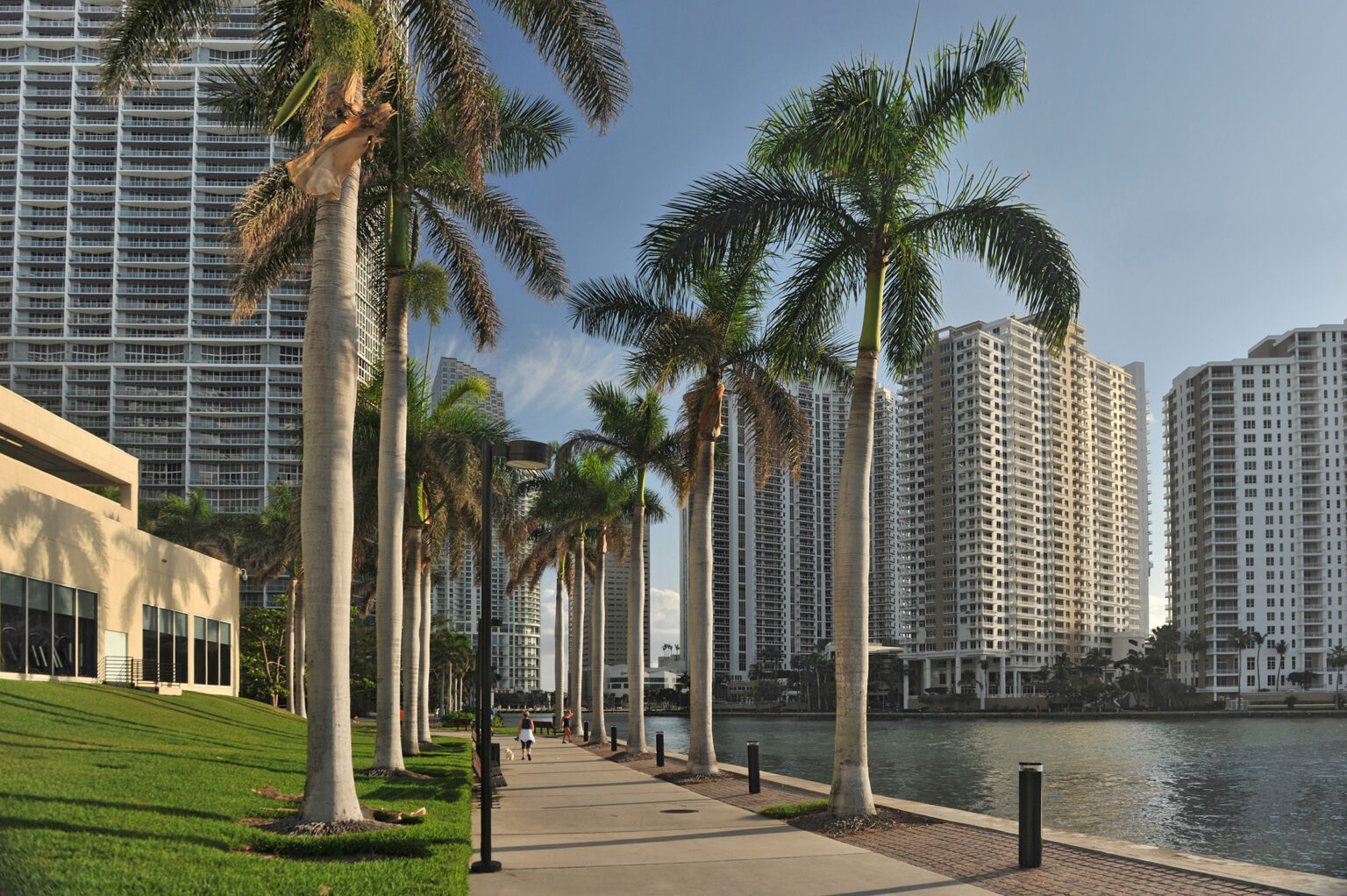 USA - Local and federal officials have agreed to a plan to study new ways to protect much of Miami from rising seas and storm surge in the decades ahead, measures that could include dune reinforcements, extensive mangroves and barrier gates at three inlets. This is Miami-Dade County’s second attempt to come up with a plan with the U.S. Army Corps of Engineers. The first, which proposed to study high seawalls around the metropolis, was essentially vetoed after residents complained about the idea of a giant wall on their shoreline, the Miami Herald reported this week. The new plan, reached after extensive input from the public, allows a $7 million study to proceed on the feasibility of a new protection system, which could also include elevating thousands of homes and fortifying businesses, hospitals and fire stations. Storm surge gates, not unlike those seen in other parts of the world, including London and the Netherlands, could be installed at Government Cut inlet, Norris Cut and at the Rickenbacker Causeway, to the south, which would also be elevated, according to ideas proposed by the Corps. A final plan may not be ready for another two years and actual work could take more than a decade, the Herald noted. A cost estimate was not available but the earlier wall plan was pegged at more than $5 billion.

ASIA
Burning mangrove trees for a living: 'I'd quit tomorrow if I could'
Editors Note: Western demand for mangrove charcoal continues to drive a market for their destruction. Sadly those who do the cutting see no choice as it is their only means of support. Economists refer to this a “wicked problem” meaning to solve one problem leads to another. MAP is working with local communities to educate them on finding alternative sustainable means of support, while educating western consumers to reduce their consumption of non-sustainable products like mangrove charcoal.
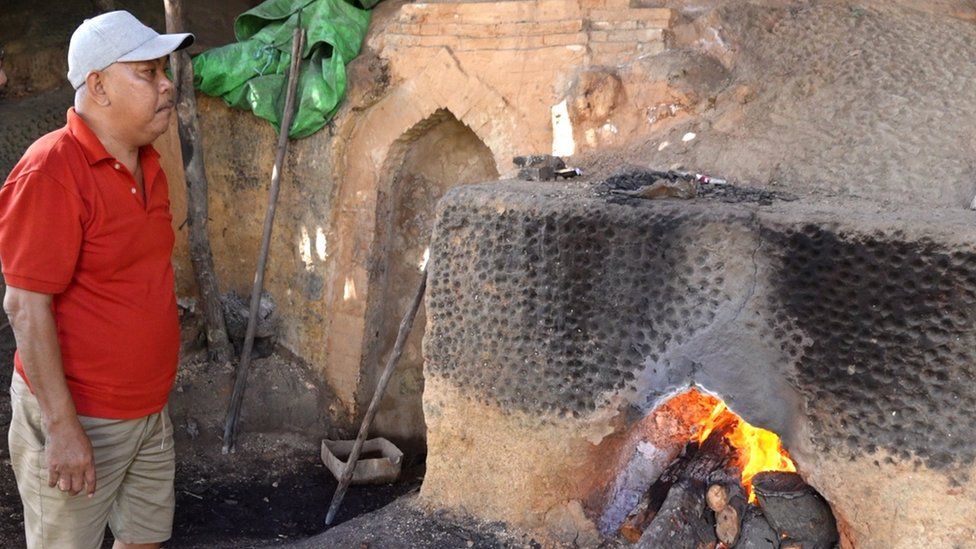 INDONESIA - Indonesia has more mangrove trees than any other country but there's growing concern about the "dangerous" rate they are being cut down, turned into charcoal and exported to places such as Europe, China and Japan. People involved in the work know the trees are important for the environment and would like to quit but they see no other way to survive. Inside a wooden hut, near his house on the island of Borneo, Nurhadi keeps two furnaces burning all year round. The 68-year-old employs at least a dozen people. Four men cut up wood collected from mangrove trees, while another throws it into a furnace made from earth and stones. Once burned, the wood is cooled and packaged, ready to be sold. Mangrove wood is very hard and dense but not very durable, which makes it ideal for charcoal production and particularly good for barbeques. But it is a resource-intensive process with little return. Sixteen tonnes of raw material only produces three tonnes of charcoal. "If I produce less than three tonnes, it's a loss," Nurhadi says. Once costs are taken into account, he estimates he only makes a profit of about $1,250 (£1,000) per year. "There's no money in cutting down mangroves. Nobody gets rich from charcoal furnaces. We do this to have food on our plate," he explains.

Like this newsletter?

Pease consider donating to MAP to keep it going.
Giving could never be easier
*Articles in this newsletter may mention practices being used and/or show exagerated results being claimed without proof. Stories are presented here in effort to show mangrove related activity around the world and do not necessarily reflect Mangrove Action Project's views or mangrove restoration best-practices.
NOTICE
NOTICE CHILDREN’S CALENDAR ART SUBMISSIONS HAS NEW EMAIL
Due to technical problems, we are required to change the email address for submission to this year’s MAP Children’s Art Contest for the the upcoming 2024 Calendar. If you have already submitted art please contact Monica at ArtContest@mangroveactionproject.org to be sure your submissions have been received or for nstructions on how to resubmit. If you have not yet submitted, please submit to the ArtContest@mangroveactionproject.org address before the August 31 deadline.
CONTEST NOW ACCEPTING SUBMISSIONS
ACTION ALERTS
Ecuador: Stop land grabbing and racial discrimination for palm oil! SIGN THE PETITION
UGANDA Stop criminalizing pipeline protesters! SIGN THE PETITION
Save Endangered Species From SpaceX
Urge SpaceX and the Federal Aviation Administration to do more to protect Boca Chica and its wildlife. SIGN THE PETITION
Do not sacrifice Congo's rainforests to the oil industry! TAKE ACTION
TAKE MAP SURVEY Please see the survey questionnaire we at MAP put together to discover where the shrimp industry is still having major adverse effects on mangroves and local communities.
TAKE THE SURVEY
Stop this total madness Stop the biggest heated oil pipeline in the world -- right through the heart of Africa!
CLICK HERE
Like this newsletter? Pease consider donating to MAP to keep it going. Giving could never be easier

MAP Website en Español
haga clic aqui
13 Year old Linda Li "Mangrove Adventure" from Kid Dream Art School
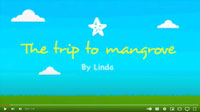
WATCH NOW
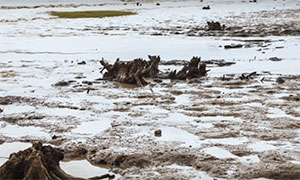
Restoring The Natural Mangrove Forest
Watch movie
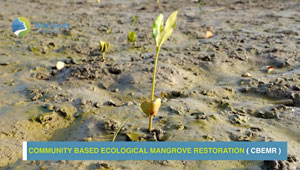
Community Based Ecological Mangrove Restoration in Rufiji Delta VIEW VIDEO
MANGROVE ISSUES
Want to learn more about mangroves?
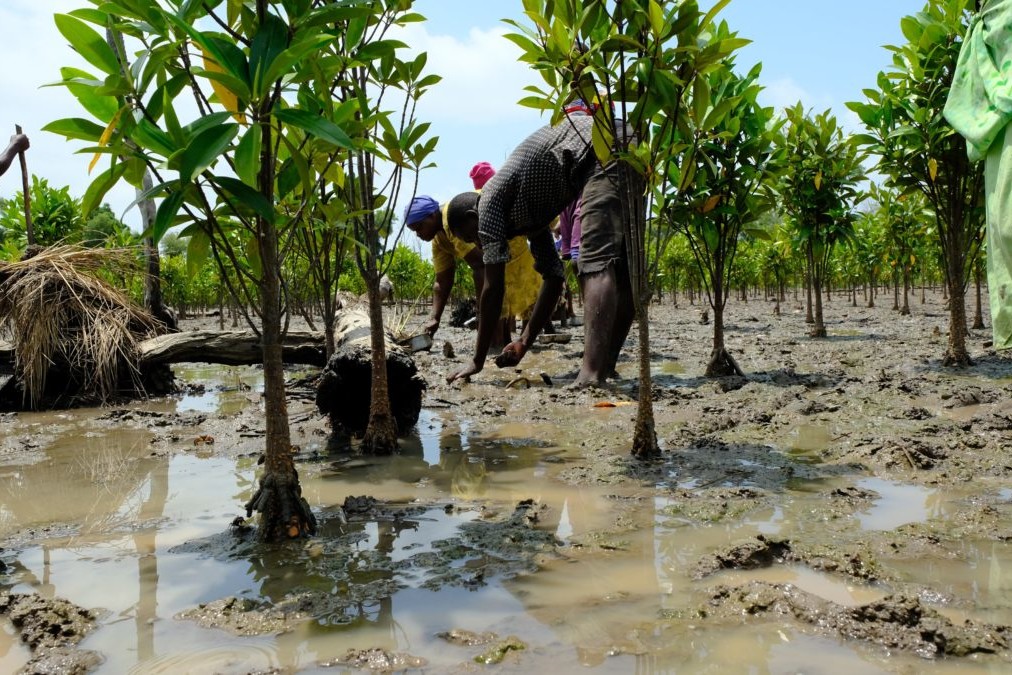
Our short presentation will give you a better understanding of the issues we are working to solve.
WATCH PRESENTATION
What is CBEMR?
Download MAP's 2 page CBEMR Information Sheet
containing links to all MAP's CBEMR resources
CLICK HERE
View MAP’s uploaded Videos at
MAP Video Gallery
Question Your Shrimp Consumer/Markets Campaign!
WATCH VIDEO
Mangroves: Guidebook to Malaysia
Click Here
SHARE MAP'S VISION
CLICK HERE to watch short introductory video.
Together we can work "at the roots of the sea".
Our short documentary, Reducing the Risk of Disaster through Nature-Based Solutions : Mangroves

Marvellous Mangroves Curriculum
The Marvellous Mangroves Curriculum begins with a simple philosophy – getting future generations to not only learn about, but understand the importance of mangrove forests. VISIT

Marvellous Mangroves – A Curriculum-Based Teachers Guide.
Like this newsletter? Pease consider donating to MAP to keep it going. Giving could never be easier

*Articles in this newsletter may mention practices being used and/or show exagerated results being claimed without proof. Stories are presented here in effort to show mangrove related activity around the world and do not necessarily reflect Mangrove Action Project's views or mangrove restoration best-practices.
|

 GLOBAL - Mangrove Action Project (MAP) 22nd annual Mangrove Art Contest submissions closes August 31. This is an opportunity for the younger generation to share what they have learned about the vital role Mangroves play in the lives of coastal communities and marine life around the world by letting them explore their imagination and have fun when creating their pieces of art. The competition is open to all children worldwide, with selected winners published in the 2024 calendar to be distributed internationally to raise awareness of mangrove forest ecology. This colorful calendar has increased in popularity since its first publication in 2002. The 2024 calendar is our 22nd edition. We would like to invite children from your country to join in this fantastic creative and educational competition. It is an opportunity for the younger generation to learn about the vital role Mangroves play in the lives of coastal communities and marine life around the world whilst letting them explore their imagination and have fun when creating their pieces of art. For any questions, contact Monica Gutierrez-Quarto, the international art competition coordinator at:
GLOBAL - Mangrove Action Project (MAP) 22nd annual Mangrove Art Contest submissions closes August 31. This is an opportunity for the younger generation to share what they have learned about the vital role Mangroves play in the lives of coastal communities and marine life around the world by letting them explore their imagination and have fun when creating their pieces of art. The competition is open to all children worldwide, with selected winners published in the 2024 calendar to be distributed internationally to raise awareness of mangrove forest ecology. This colorful calendar has increased in popularity since its first publication in 2002. The 2024 calendar is our 22nd edition. We would like to invite children from your country to join in this fantastic creative and educational competition. It is an opportunity for the younger generation to learn about the vital role Mangroves play in the lives of coastal communities and marine life around the world whilst letting them explore their imagination and have fun when creating their pieces of art. For any questions, contact Monica Gutierrez-Quarto, the international art competition coordinator at: GLOBAL - Mangrove forests are one of nature’s frontline sea defences; self-building, self-repairing and solar-powered, they do the job for nothing and provide a home for a myriad of creatures- from sponges to sharks, fish to frigatebirds. Yet worldwide, the world already lost 20 percent of the mangrove ecosystems due to coastal development. According to UNESCO, these frontier forests are disappearing three to five times faster than overall global forest losses, with serious ecological and socio-economic impacts. As well as protecting low-lying islands and vulnerable coastlines against storm surges, tsunamis, rising sea levels and erosion, their soils are highly effective carbon sinks, sequestering up to five times more carbon from the atmosphere than forests on land. Mangroves also provide valuable nursery grounds for fish, conchs, lobsters and other crustaceans which, in turn, support coastal fishing communities and contribute to food security. UNEP research has calculated that by underpinning fisheries and buffering coastlines, every hectare of mangrove forest represents an estimated US$33-57,000 per year. Not only that, but protecting a mangrove forest is 1000 times less expensive, per kilometre, than building a seawall. Mangroves have evolved a range of adaptations for withstanding the salt in seawater. Some species have special membranes covering their roots which prevent the salt from entering, but most varieties draw in seawater and then find a way of ridding themselves of the salt at a later stage.
GLOBAL - Mangrove forests are one of nature’s frontline sea defences; self-building, self-repairing and solar-powered, they do the job for nothing and provide a home for a myriad of creatures- from sponges to sharks, fish to frigatebirds. Yet worldwide, the world already lost 20 percent of the mangrove ecosystems due to coastal development. According to UNESCO, these frontier forests are disappearing three to five times faster than overall global forest losses, with serious ecological and socio-economic impacts. As well as protecting low-lying islands and vulnerable coastlines against storm surges, tsunamis, rising sea levels and erosion, their soils are highly effective carbon sinks, sequestering up to five times more carbon from the atmosphere than forests on land. Mangroves also provide valuable nursery grounds for fish, conchs, lobsters and other crustaceans which, in turn, support coastal fishing communities and contribute to food security. UNEP research has calculated that by underpinning fisheries and buffering coastlines, every hectare of mangrove forest represents an estimated US$33-57,000 per year. Not only that, but protecting a mangrove forest is 1000 times less expensive, per kilometre, than building a seawall. Mangroves have evolved a range of adaptations for withstanding the salt in seawater. Some species have special membranes covering their roots which prevent the salt from entering, but most varieties draw in seawater and then find a way of ridding themselves of the salt at a later stage.
 KENYA - What defines a society? Is it our connection to a place, or the people who live there, or the way we think and do things? I believe human societies are defined by culture, which is in turn built upon our relationship with the environment around us. I grew up on the coast of Kenya, by the Indian Ocean. Our culture is built upon our connection with the ocean and the vast natural resources it provides, including the mangrove ecosystems that stretch across our 530-kilometer coastline. Our lives are defined by the ocean, and we cannot live without it. In the late 20th century, commercial logging began in Tudor Creek, a large water body in Kenya’s second-largest city, Mombasa. Mangroves started being felled for export, defying the traditional ban on cutting down large mangrove trees. This was the first step towards severing the connection between indigenous peoples and mangroves. At the same time, urbanization and migration led to rapid population growth along Kenya’s coast. Mombasa grew into a large metropolitan area, and its new residents never learned the art of mangrove restoration. Life in the big city was simply about survival, even if it came at the cost of the mangroves, which were mercilessly cut down. If we are to go back to our roots and find out what went wrong, we need to answer several questions. How did our forefathers survive and thrive? How did they coexist with their environment?
KENYA - What defines a society? Is it our connection to a place, or the people who live there, or the way we think and do things? I believe human societies are defined by culture, which is in turn built upon our relationship with the environment around us. I grew up on the coast of Kenya, by the Indian Ocean. Our culture is built upon our connection with the ocean and the vast natural resources it provides, including the mangrove ecosystems that stretch across our 530-kilometer coastline. Our lives are defined by the ocean, and we cannot live without it. In the late 20th century, commercial logging began in Tudor Creek, a large water body in Kenya’s second-largest city, Mombasa. Mangroves started being felled for export, defying the traditional ban on cutting down large mangrove trees. This was the first step towards severing the connection between indigenous peoples and mangroves. At the same time, urbanization and migration led to rapid population growth along Kenya’s coast. Mombasa grew into a large metropolitan area, and its new residents never learned the art of mangrove restoration. Life in the big city was simply about survival, even if it came at the cost of the mangroves, which were mercilessly cut down. If we are to go back to our roots and find out what went wrong, we need to answer several questions. How did our forefathers survive and thrive? How did they coexist with their environment? TANZANIA - THE government has reiterated its commitment to encourage planting of more mangroves in coastal areas to enhance carbon trading and address effects of climate change. The assurance was made on Wednesday by the Minister of State in the Vice-President Office (Union and Environment), Dr Selemani Jafo, during a meeting with members of the Parliamentary Committee on subsidiary legislations. The meeting was a follow up on implementation of resolutions made during the previous Parliament sessions which discussed about the analysis of the subsidiary legislations. Dr Jafo admitted that coastal areas were facing the challenge of being eaten up by sea water due to increased sea depth, so the government continues dealing with the challenge by building walls and ridges to reduce the speed of the sea waves. Speaking about carbon trading, he noted the government invites investors to use the opportunity of planting mangroves in the coastal areas that face environmental challenges. He also explained that in some coastal areas, mangroves are swept by sea water, a situation which causes the shores of the sea to erode, hence causing floods. Minister Jafo further encouraged farmers to continue cultivating cash crops, arguing that such crops apart from giving them profit, will also benefit from the carbon trade.
TANZANIA - THE government has reiterated its commitment to encourage planting of more mangroves in coastal areas to enhance carbon trading and address effects of climate change. The assurance was made on Wednesday by the Minister of State in the Vice-President Office (Union and Environment), Dr Selemani Jafo, during a meeting with members of the Parliamentary Committee on subsidiary legislations. The meeting was a follow up on implementation of resolutions made during the previous Parliament sessions which discussed about the analysis of the subsidiary legislations. Dr Jafo admitted that coastal areas were facing the challenge of being eaten up by sea water due to increased sea depth, so the government continues dealing with the challenge by building walls and ridges to reduce the speed of the sea waves. Speaking about carbon trading, he noted the government invites investors to use the opportunity of planting mangroves in the coastal areas that face environmental challenges. He also explained that in some coastal areas, mangroves are swept by sea water, a situation which causes the shores of the sea to erode, hence causing floods. Minister Jafo further encouraged farmers to continue cultivating cash crops, arguing that such crops apart from giving them profit, will also benefit from the carbon trade.
 COLUMBIA - Cartagena is a buzzing tourist city in northern Colombia, but hiding in plain sight is a rare species of mangrove, providing essential ecosystem services. According to a 2020 study, between 2000 and 2016, human activity was the primary driver of mangrove area loss, with expanding coastal cities (urbanization) being a key factor. Karla Ramírez-Ruiz, a master's student of the Erasmus Mundus Joint Master Degree in Tropical Biodiversity and Ecosystem (TROPIMUNDO), says that researchers were looking at records of the Piñuelo mangrove (Pelliciera spp.), a very rare and endangered genus of mangroves that occur in limited stands found in South and Central America. "Soon, we realize that most of the 20th century historical records of Pelliciera spp. in Colombia were in Cartagena city and other urban areas in the Caribbean," she says, adding that the researchers began to see cities more as highly human-modified ecosystems.
COLUMBIA - Cartagena is a buzzing tourist city in northern Colombia, but hiding in plain sight is a rare species of mangrove, providing essential ecosystem services. According to a 2020 study, between 2000 and 2016, human activity was the primary driver of mangrove area loss, with expanding coastal cities (urbanization) being a key factor. Karla Ramírez-Ruiz, a master's student of the Erasmus Mundus Joint Master Degree in Tropical Biodiversity and Ecosystem (TROPIMUNDO), says that researchers were looking at records of the Piñuelo mangrove (Pelliciera spp.), a very rare and endangered genus of mangroves that occur in limited stands found in South and Central America. "Soon, we realize that most of the 20th century historical records of Pelliciera spp. in Colombia were in Cartagena city and other urban areas in the Caribbean," she says, adding that the researchers began to see cities more as highly human-modified ecosystems. USA - Kennesha Garg, a junior at American High School in Fremont, California, has designed a new landfill gas (LFG) pipe, which she says she hopes to test this summer in a windrow at a compost facility. For her efforts thus far, she won first place in San Francisco University’s 2023 Junior Science and Humanities Symposium in the Environmental Science category. Garg says she spent some of her childhood in India living in areas with dumps nearby. “Where my parents and I lived, there were pockets of dumps everywhere,” she says. “This always used to bother me because of how it used to basically tarnish the beauty of the place that I loved the most. And, also, it really affected my health and my family’s health.” As a young child, she says she wondered why waste wasn’t managed better and learned in high school about the role methane and carbon dioxide emissions from landfills play in climate change. “I resolved to tackle the situation because it was so close to my heart,” she says. “I have to do something about this because of how it has affected me and my family personally, and how it has affected so many other people in the world.” Inspired by the roots of mangrove trees and the idea of biomimicry, Garg says she set about trying to design LFG collection pipe system that uses a root structure to access more landfill area than standard pipes.
USA - Kennesha Garg, a junior at American High School in Fremont, California, has designed a new landfill gas (LFG) pipe, which she says she hopes to test this summer in a windrow at a compost facility. For her efforts thus far, she won first place in San Francisco University’s 2023 Junior Science and Humanities Symposium in the Environmental Science category. Garg says she spent some of her childhood in India living in areas with dumps nearby. “Where my parents and I lived, there were pockets of dumps everywhere,” she says. “This always used to bother me because of how it used to basically tarnish the beauty of the place that I loved the most. And, also, it really affected my health and my family’s health.” As a young child, she says she wondered why waste wasn’t managed better and learned in high school about the role methane and carbon dioxide emissions from landfills play in climate change. “I resolved to tackle the situation because it was so close to my heart,” she says. “I have to do something about this because of how it has affected me and my family personally, and how it has affected so many other people in the world.” Inspired by the roots of mangrove trees and the idea of biomimicry, Garg says she set about trying to design LFG collection pipe system that uses a root structure to access more landfill area than standard pipes.
 INDONESIA - Indonesia has more mangrove trees than any other country but there's growing concern about the "dangerous" rate they are being cut down, turned into charcoal and exported to places such as Europe, China and Japan. People involved in the work know the trees are important for the environment and would like to quit but they see no other way to survive. Inside a wooden hut, near his house on the island of Borneo, Nurhadi keeps two furnaces burning all year round. The 68-year-old employs at least a dozen people. Four men cut up wood collected from mangrove trees, while another throws it into a furnace made from earth and stones. Once burned, the wood is cooled and packaged, ready to be sold. Mangrove wood is very hard and dense but not very durable, which makes it ideal for charcoal production and particularly good for barbeques. But it is a resource-intensive process with little return. Sixteen tonnes of raw material only produces three tonnes of charcoal. "If I produce less than three tonnes, it's a loss," Nurhadi says. Once costs are taken into account, he estimates he only makes a profit of about $1,250 (£1,000) per year. "There's no money in cutting down mangroves. Nobody gets rich from charcoal furnaces. We do this to have food on our plate," he explains.
INDONESIA - Indonesia has more mangrove trees than any other country but there's growing concern about the "dangerous" rate they are being cut down, turned into charcoal and exported to places such as Europe, China and Japan. People involved in the work know the trees are important for the environment and would like to quit but they see no other way to survive. Inside a wooden hut, near his house on the island of Borneo, Nurhadi keeps two furnaces burning all year round. The 68-year-old employs at least a dozen people. Four men cut up wood collected from mangrove trees, while another throws it into a furnace made from earth and stones. Once burned, the wood is cooled and packaged, ready to be sold. Mangrove wood is very hard and dense but not very durable, which makes it ideal for charcoal production and particularly good for barbeques. But it is a resource-intensive process with little return. Sixteen tonnes of raw material only produces three tonnes of charcoal. "If I produce less than three tonnes, it's a loss," Nurhadi says. Once costs are taken into account, he estimates he only makes a profit of about $1,250 (£1,000) per year. "There's no money in cutting down mangroves. Nobody gets rich from charcoal furnaces. We do this to have food on our plate," he explains.








 HONDURASA heron chick flutters clumsily after hatching in a nest on a mangrove island littered with plastic waste in the Gulf of Fonseca, along the Pacific Coast of Central America. The air fills with shrieks of other seabirds also nesting on Los Pajaros Island, in the San Lorenzo Wildlife Reserve, set amid turquoise waters shared by Honduras, El Salvador and Nicaragua. Thousands of herons, gulls, pelicans, frigate birds, roseate spoonbills and other seabirds dwell in the tangle of
HONDURASA heron chick flutters clumsily after hatching in a nest on a mangrove island littered with plastic waste in the Gulf of Fonseca, along the Pacific Coast of Central America. The air fills with shrieks of other seabirds also nesting on Los Pajaros Island, in the San Lorenzo Wildlife Reserve, set amid turquoise waters shared by Honduras, El Salvador and Nicaragua. Thousands of herons, gulls, pelicans, frigate birds, roseate spoonbills and other seabirds dwell in the tangle of GLOBAL – The World Wildlife Foundation (WWF) and Google.org (Google’s philanthropic arm) announced the launch of a project called ManglarIA. Spanish for “AI for Mangroves,” ManglarIA is a new, three-year project that will utilize artificial intelligence to understand how mangrove ecosystems — and their contributions to coastal communities — are affected by climate change. Mangroves are a uniquely resilient and helpful species. They are a group of shrubs or trees that grow along coastlines and tidal rivers and are able to store carbon at about four times the rate of other types of forests. They are an essential nature-based solution to climate change, providing vital levels of carbon sequestration and biodiversity to coastal ecosystems and economies — and it’s critical that they are protected. The project will identify key indicators of the health of mangroves and provide conservationists with better information to protect them, creating scalable and measurable solutions that can be replicated in other coastal regions.
GLOBAL – The World Wildlife Foundation (WWF) and Google.org (Google’s philanthropic arm) announced the launch of a project called ManglarIA. Spanish for “AI for Mangroves,” ManglarIA is a new, three-year project that will utilize artificial intelligence to understand how mangrove ecosystems — and their contributions to coastal communities — are affected by climate change. Mangroves are a uniquely resilient and helpful species. They are a group of shrubs or trees that grow along coastlines and tidal rivers and are able to store carbon at about four times the rate of other types of forests. They are an essential nature-based solution to climate change, providing vital levels of carbon sequestration and biodiversity to coastal ecosystems and economies — and it’s critical that they are protected. The project will identify key indicators of the health of mangroves and provide conservationists with better information to protect them, creating scalable and measurable solutions that can be replicated in other coastal regions. 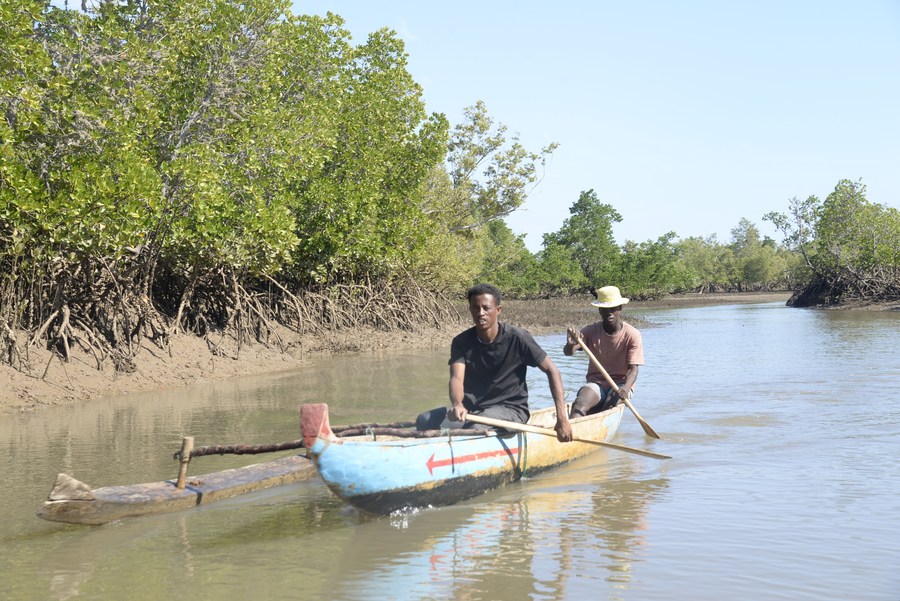 MADAGASCAR – To arrive in the village of Kivalo in southwestern Madagascar, an island country in the Indian Ocean, visitors have to take a 45-minute boat ride through beautiful mangroves from the nearest land point. Thanks to the efforts of grassroots communities and their global partners, the village now serves as an example of nature conservation that benefits both the environment and the people. "A hundred years ago, Kivalo was directly exposed to the Mozambique Channel, when the mangroves were not there yet. The change of the riverbed due to successive cyclones has favored the plantations of mangroves around the village," said Justin Ramanahirana, president of a community organization managing mangrove conservation, known as the Analamaitso tsy ho gnan'olo (The green forest that is ours). The growth of mangroves has changed the lives of the 200 households who used to live on fishing in Kivalo for the better. "We protect the mangrove because all our money comes from it. We can catch 40 kilos of shrimp in a single catch. Thanks to the mangrove, it is no longer necessary to fish further out in the open sea," said Ramanahirana, a 44-year-old father of two sons and five daughters.
MADAGASCAR – To arrive in the village of Kivalo in southwestern Madagascar, an island country in the Indian Ocean, visitors have to take a 45-minute boat ride through beautiful mangroves from the nearest land point. Thanks to the efforts of grassroots communities and their global partners, the village now serves as an example of nature conservation that benefits both the environment and the people. "A hundred years ago, Kivalo was directly exposed to the Mozambique Channel, when the mangroves were not there yet. The change of the riverbed due to successive cyclones has favored the plantations of mangroves around the village," said Justin Ramanahirana, president of a community organization managing mangrove conservation, known as the Analamaitso tsy ho gnan'olo (The green forest that is ours). The growth of mangroves has changed the lives of the 200 households who used to live on fishing in Kivalo for the better. "We protect the mangrove because all our money comes from it. We can catch 40 kilos of shrimp in a single catch. Thanks to the mangrove, it is no longer necessary to fish further out in the open sea," said Ramanahirana, a 44-year-old father of two sons and five daughters. 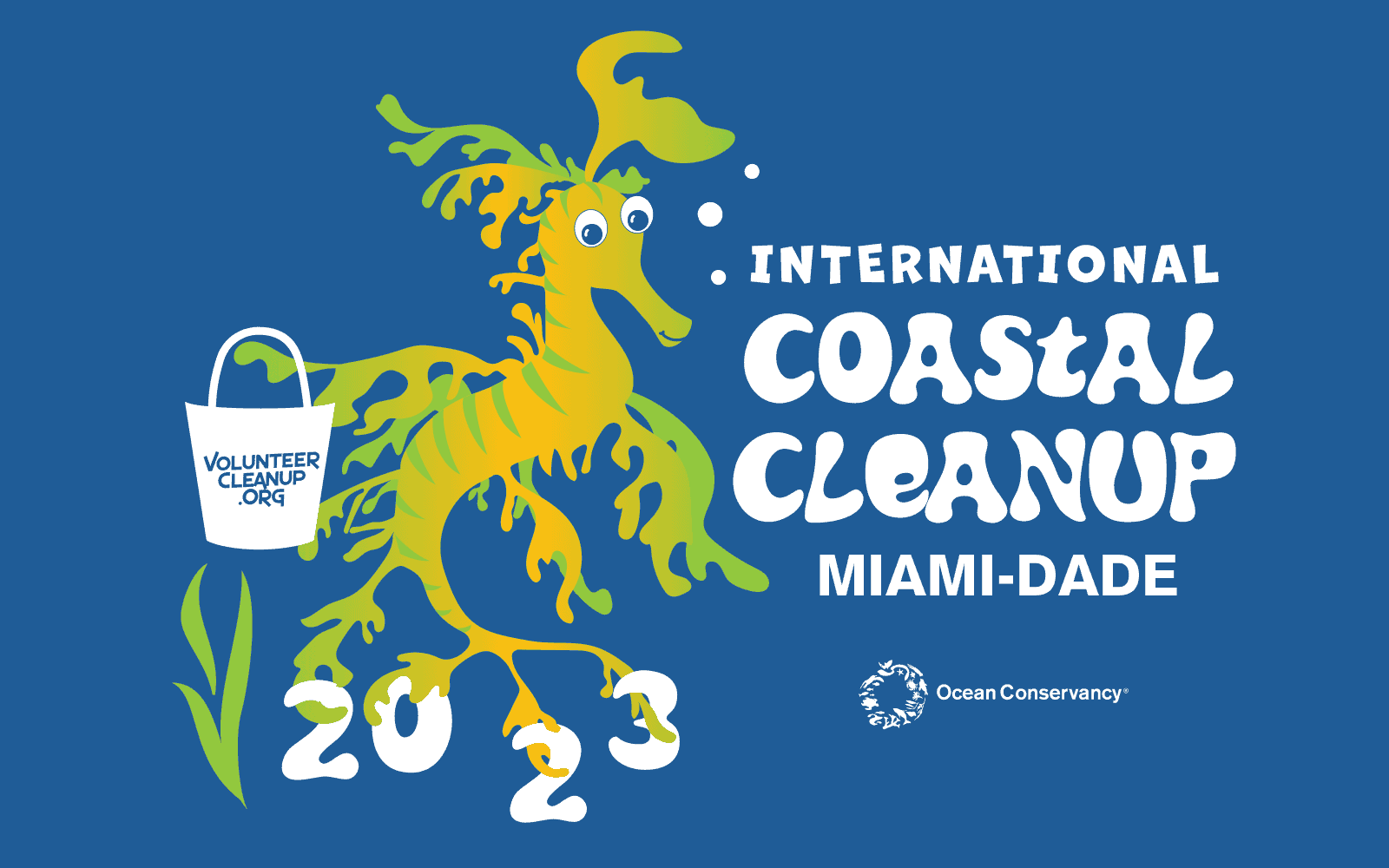 USA - Registration is OPEN for the annual county-wide International Coastal Cleanup Miami-Dade to be held on Saturday, September 16th, 2023! Get ready to join millions of volunteers around the globe for the Ocean Conservancy’s 38th annual International Coastal Cleanup – the world’s LARGEST one-day volunteer effort for our oceans and waterways. Spearheaded globally by the Ocean Conservancy, VolunteerCleanup.org organizes Miami-Dade’s local participation in this annual event with 50+ simultaneous shoreline cleanups around the county and is made possible by the generous support of our presenting sponsors Covanta and Boucher Brothers, with additional support from Blackstone Charitable Foundation, The Brady Hunter Foundation, Benjamin & Gloria Joannou, Jr. Family Conservation Fund, City of Miami Beach, The Miami Foundation, Loud And Live, and Miami-Dade County RER-DERM. All volunteers will get a reusable tote bag with this year's animal theme, the Seahorse! We will have contests for those who find the strangest thing, and as always, community service hours will be provided.
USA - Registration is OPEN for the annual county-wide International Coastal Cleanup Miami-Dade to be held on Saturday, September 16th, 2023! Get ready to join millions of volunteers around the globe for the Ocean Conservancy’s 38th annual International Coastal Cleanup – the world’s LARGEST one-day volunteer effort for our oceans and waterways. Spearheaded globally by the Ocean Conservancy, VolunteerCleanup.org organizes Miami-Dade’s local participation in this annual event with 50+ simultaneous shoreline cleanups around the county and is made possible by the generous support of our presenting sponsors Covanta and Boucher Brothers, with additional support from Blackstone Charitable Foundation, The Brady Hunter Foundation, Benjamin & Gloria Joannou, Jr. Family Conservation Fund, City of Miami Beach, The Miami Foundation, Loud And Live, and Miami-Dade County RER-DERM. All volunteers will get a reusable tote bag with this year's animal theme, the Seahorse! We will have contests for those who find the strangest thing, and as always, community service hours will be provided.
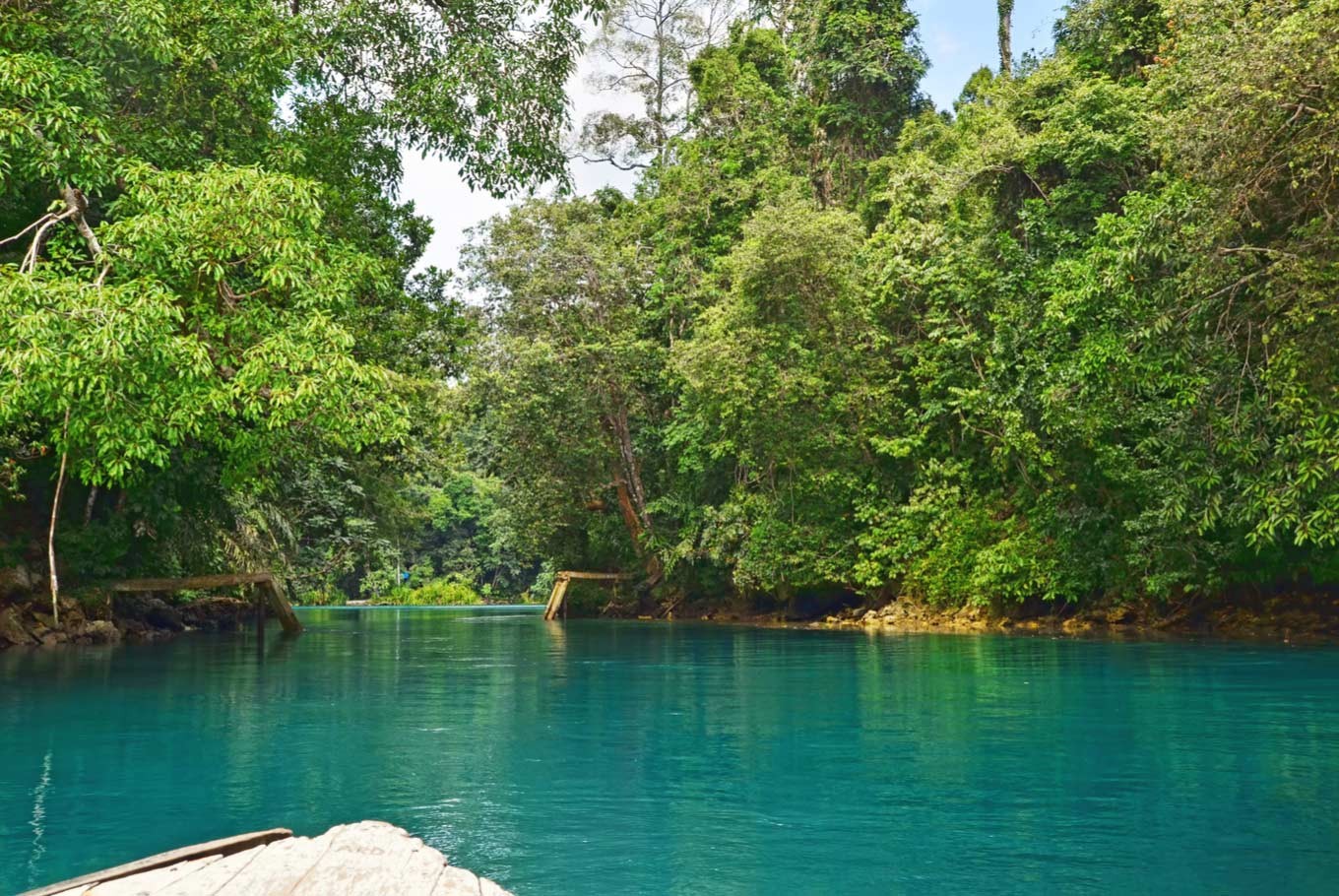 INDONESIA - Imagine a world where 15 million people are safer from storms and flooding, where 4.1 million small-scale fishers have a secure livelihood, and where 25 billion fish and shellfish thrive. This isn’t a fantasy; it’s what could be achieved through the restoration of the world’s mangroves. Mangroves are nature’s shield against the wrath of rising seas and storm surges, especially for vulnerable coastal communities in Small Island Developing States (SIDS) and Least Developing Countries (LDCs). They are not just barriers; they are nurseries for marine life, carbon sinks, and symbols of culture and tradition. In the coastal villages of West Kalimantan, the devastation of once-thriving mangrove forests, essential to the livelihood of countless local fishers, has ignited a movement for restoration and rejuvenation. This effort is not merely about rebuilding a marine life habitat but reconnecting with a part of the community’s identity. Spearheaded by community members and supported by local governments, national authorities, Planet Indonesia, and the Global Mangrove Alliance, among others, efforts are underway to reconstruct what was lost. By blending modern scientific knowledge with traditional insights, villagers are nurturing the mangroves as symbols of their cultural heritage.
INDONESIA - Imagine a world where 15 million people are safer from storms and flooding, where 4.1 million small-scale fishers have a secure livelihood, and where 25 billion fish and shellfish thrive. This isn’t a fantasy; it’s what could be achieved through the restoration of the world’s mangroves. Mangroves are nature’s shield against the wrath of rising seas and storm surges, especially for vulnerable coastal communities in Small Island Developing States (SIDS) and Least Developing Countries (LDCs). They are not just barriers; they are nurseries for marine life, carbon sinks, and symbols of culture and tradition. In the coastal villages of West Kalimantan, the devastation of once-thriving mangrove forests, essential to the livelihood of countless local fishers, has ignited a movement for restoration and rejuvenation. This effort is not merely about rebuilding a marine life habitat but reconnecting with a part of the community’s identity. Spearheaded by community members and supported by local governments, national authorities, Planet Indonesia, and the Global Mangrove Alliance, among others, efforts are underway to reconstruct what was lost. By blending modern scientific knowledge with traditional insights, villagers are nurturing the mangroves as symbols of their cultural heritage.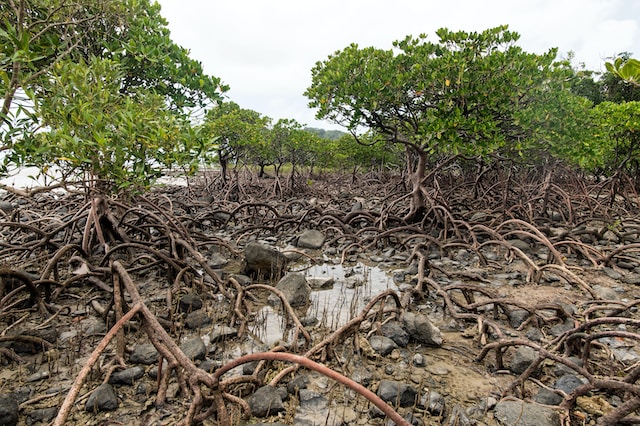 INDIA - Beyond their ecological importance, mangrove forests are vital habitats for more than 75% of commercially important fish species, supporting the livelihoods of over 100 million people, as reported by the Food and Agriculture Organization of grounds for endangered species like sea turtles, migratory birds and even a “mangrove tiger” in India, demonstrating their significance in maintaining diverse marine life. The value of mangroves' ecosystem services is estimated to be approximately USD 194,000 per hectare, as indicated by Barbier et al.'s research in 2011. Regrettably, these green guardians face a host of threats, leading to their decline in many regions across the globe. Alarming statistics show that for every one percent of mangrove loss, a staggering 200 million tonnes of carbon, once trapped in mangroves, is released into the atmosphere. In India, the country has lost approximately 40% of its mangroves due to factors such as urbanization, pollution, and unsustainable practices. Globally, mangrove cover has decreased by an estimated 35% since the 1980s.
INDIA - Beyond their ecological importance, mangrove forests are vital habitats for more than 75% of commercially important fish species, supporting the livelihoods of over 100 million people, as reported by the Food and Agriculture Organization of grounds for endangered species like sea turtles, migratory birds and even a “mangrove tiger” in India, demonstrating their significance in maintaining diverse marine life. The value of mangroves' ecosystem services is estimated to be approximately USD 194,000 per hectare, as indicated by Barbier et al.'s research in 2011. Regrettably, these green guardians face a host of threats, leading to their decline in many regions across the globe. Alarming statistics show that for every one percent of mangrove loss, a staggering 200 million tonnes of carbon, once trapped in mangroves, is released into the atmosphere. In India, the country has lost approximately 40% of its mangroves due to factors such as urbanization, pollution, and unsustainable practices. Globally, mangrove cover has decreased by an estimated 35% since the 1980s. FIJI - IUCN, the International Union for Conservation of Nature is often synonymous with work on environment conservation. One such programme hosted here in IUCN’s Oceania Regional Office is the Nature based Solutions (NbS) programme which hosts the Kiwa Initiative- small and medium grant programme,working with locally based projects on climate adaptation activities in response to climate change impacts- an issue that is fast becoming visible in our region. The Kiwa Initiative – Nature-based Solutions (NbS) for climate resilience aims at strengthening the climate change resilience of Pacific Islands ecosystems, communities and economies through NbS, by protecting, sustainably managing and restoring biodiversity- “Using Nature to Conserve Nature”. The Initiative was launched in 2020. For this year’s International Day for the Conservation of Mangrove Ecosystems, we will be spotlighting two Kiwa Initiative projects, who are working on mangroves conservation and restoration within their respective communities! The first project focusses on Restoring Mangroves for Livelihoods in Fiji. While the second, works with Customary Law for Fisheries and Marine Ecosystem Restoration in Timor-Leste.
FIJI - IUCN, the International Union for Conservation of Nature is often synonymous with work on environment conservation. One such programme hosted here in IUCN’s Oceania Regional Office is the Nature based Solutions (NbS) programme which hosts the Kiwa Initiative- small and medium grant programme,working with locally based projects on climate adaptation activities in response to climate change impacts- an issue that is fast becoming visible in our region. The Kiwa Initiative – Nature-based Solutions (NbS) for climate resilience aims at strengthening the climate change resilience of Pacific Islands ecosystems, communities and economies through NbS, by protecting, sustainably managing and restoring biodiversity- “Using Nature to Conserve Nature”. The Initiative was launched in 2020. For this year’s International Day for the Conservation of Mangrove Ecosystems, we will be spotlighting two Kiwa Initiative projects, who are working on mangroves conservation and restoration within their respective communities! The first project focusses on Restoring Mangroves for Livelihoods in Fiji. While the second, works with Customary Law for Fisheries and Marine Ecosystem Restoration in Timor-Leste.


